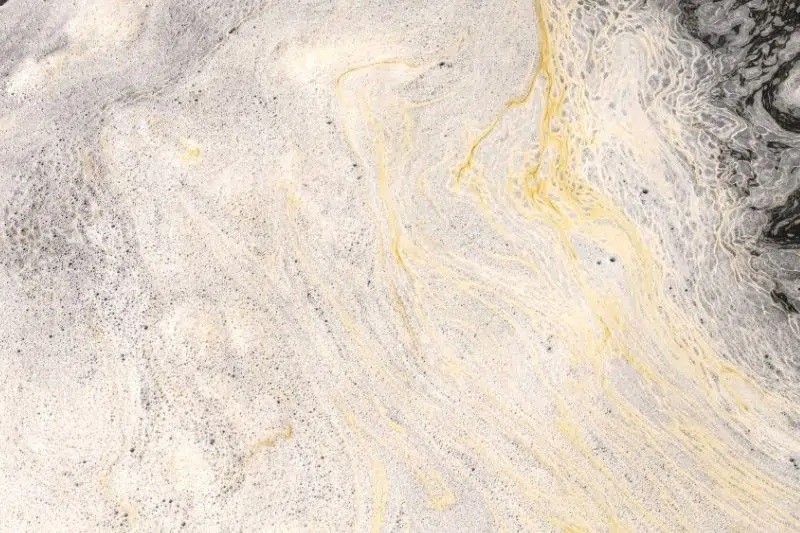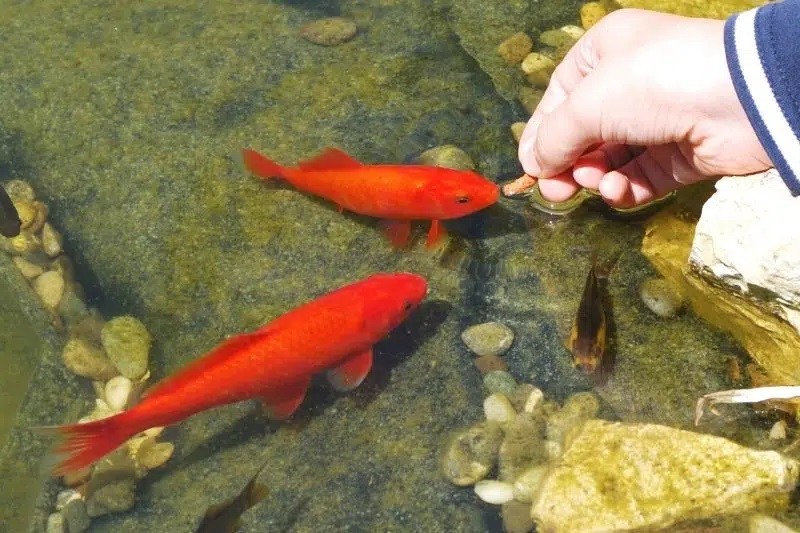If the pond water foams, the garden pond quickly looks unkempt. In addition, not all foam is harmless to the pond inhabitants. Therefore, you should investigate the cause in any case.
Contents
Causes of foaming
Pond water foams when surface-active substances (proteins, surfactants) are present in the water, it is set in motion (waves, turbulence, rain, waterfalls, fountains) and air is introduced.
Surfactants and saponins
Surfactants are washing-active substances that are produced synthetically. They form, for example, the foam of washing-up liquids, detergents, shampoos or foam baths. They are only found in garden ponds if they are added to the pond water directly or indirectly (wastewater) by humans.
Saponins can be described as a natural form of washing-active substances. They are found in many plants and serve them as a defense against fungi and insects. The best-known representatives belong to the genus of soapworts (Saponaria). They are often suspected of being responsible for the formation of foam in the pond. However, since the plants prefer dry locations, this is rather unfounded.
Rather, the saponin-rich marsh marigold (Caltha palustris) should come into focus when the pond water foams. For it is popular for riparian planting.
Note: Saponins may also be present in fish food, as they accelerate fish growth

Proteins
Since surfactants or saponins can hardly be considered as the cause of foaming in the pond, the cause must be sought in proteins. Since they are found in any organic material, there are several possibilities that are causative for pond scum:
- organic decomposition products (dead fish and other pond inhabitants, fallen leaves).
- algae
- excess fish food
Countermeasures
Whether countermeasures must necessarily be initiated depends on the chemistry of the foam.
Surfactants
Surfactants are toxic and do not belong in the pond. If they are responsible for the foam formation, the foam crowns shimmer in the light. The only thing that will help here is a complete water change and elimination of the cause.
Saponins
Saponins are considered harmless to pond dwellers. If they are contained in fish food, you should nevertheless reduce the amounts so that the fish are not overfed.
Proteins
If the pond water foams due to an excessive protein concentration, it is usually a visual problem. This natural foam can be recognized by its viscosity. In addition, it often smells of fish or earth. It also lacks iridescence in the light.
Remove pond scum
When pond water foams, skimming off the foam is the easiest way to get rid of the viscous mass on the water surface. However, this method doesn’t last because it doesn’t target the cause of the foam. That’s why skimming eventually becomes a permanent task.
Foam traps/float barriers
Foam traps or floating barriers prevent foam from traveling across the pond and spreading. A prerequisite for this method is that you have figured out where the foam starts. Once the pond scum is contained in place, you can skim it off.
Tip: The simplest foam skimmer is a suitable piece of wood
Protein skimmer
A protein skimmer is a module that is inserted into the filter system. As it passes through, the pond scum is solidified, separated from the clean water and carried away. This leads to the fact that the foam formation decreases. However, this has no effect on the cause.
Note: Protein skimmers not only reduce foaming, but also improve overall water quality by removing phosphates, ammonia, humic acid or dyes from pond water.
Eliminate causes
Although eliminating the cause isn’t necessarily necessary when foam builds up naturally, you should do so anyway. This is because in the long run, the overall water quality will deteriorate. Therefore, you should take the following measures:
- Do not feed fish excessively (smaller amounts, more often).
- remove leaves and other dead plant remains
- Fish out algae
- Removal of dead fish and other pond inhabitants
- Remove mulch from the bottom of the pond

Prevention
To prevent the pond water from foaming, you should also resort to preventive measures. Like eliminating excessive protein concentration in pond water, these are aimed at improving water quality. Therefore, proper fish feeding, removal of dead organic material (animals, plant parts, etc.), fishing off algae, and regular removal of the mulm layer are also part of pond maintenance. Furthermore, pond cleaning twice a year is among the preventive measures.
Frequently asked questions
Can the filter system be a source of foam?
Filters that are installed above the water surface can cause foaming. Likewise, new filter systems can cause foam during the first few weeks. Nonetheless, you should check the water quality.
How do I dispose of pond foam?
Put natural foam on the compost and destroy the bubbles with the garden hose. If the pond scum is toxic, collect it in an impermeable container. Dispose of the resulting water via the sewer system in the same way as rinse water.


